Submitted by WA Contents
Jun Murata designed a house for installation:Pure simplicity reiterates itself
United Kingdom Architecture News - Mar 19, 2015 - 12:37 5583 views

Japanese-based architect Jun Murata designed a minimalist house for an installation and its modest but simple&pure form makes life an easy in the interior of the house.
The site is a corner of the back alley leading to the shopping street.This is a renovation project of a wooden house built in 1976.Existing buildings had an office part and residence part.This promiscuous office’s facade revealed ugly appearance to the street.By sloppy composition of inside rooms, the residence part was showing the abrupt condition.

From the client is an artist, a comfortable living space, the space for creation, and exhibition space of her works are required. Additionally, the renovation of the office’s facade is requested.Under the hard condition of structure and the severe cost condition, we considered how should the space connect and separate and had to provide enough natural light to the inside space without making new windows.
Firstly, after unnecessary walls are removed, I confirmed to know the direction of natural light. Old structure is dismantled, new equipment layout and enough storage replaced functionally, and flexible circulation is linked simply, and designed lighting plan rationally.Secondly, the oblique wall are installed the center part, and placed a corridor has enough width beside it.
The wall gives a deep impression of depth than the actual space.In addition, it narrows the soft natural light from the south side, amplified the intensity of it with proceeding inside space.A opening door has detail similar to the storage core is installed on the middle of corridor, which leads as service circulation to the kitchen. Staircase is extended so as to be perpendicular thereto, the amphidromous flow space is provided.
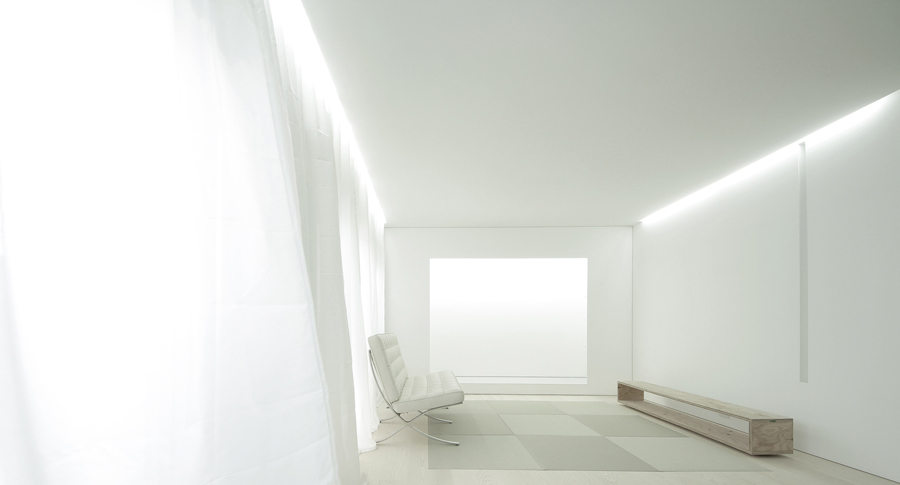
The south face part - previously, there was Japanese-style rooms – is converted to one large room which faces a minimum space as white blank. It is used as living, dining and Japanese-style room, prepared various lighting patterns.This space related with Japanese-style room with a rectangular opening, is used as the exhibition, storage and etc.. Here, it was a space that had been used as a traditional alcove and Buddhist altar.This new alcove space and Japanese-style room are separated with the altar and small walls which are cut off at the acute angle edge.A white rectangle by the indirect light spread behind it has led to the blank of empty in the space.
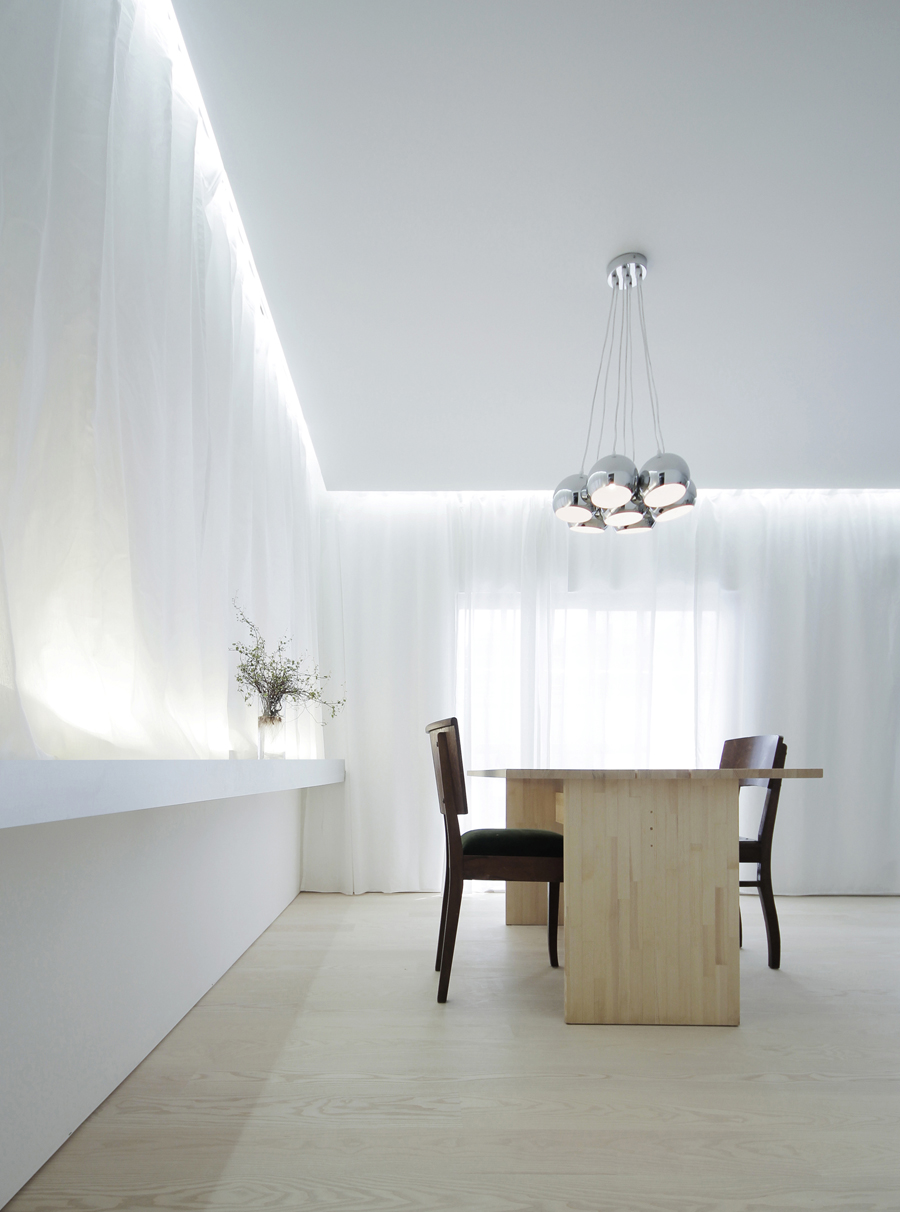
Each slits provided in the ceiling - the scale of various widths are determined on it, installed indirect lightings, curtain and a sliding door. Additionally, in the linen room has no window, to lead the natural light from the south, a vertical slit is bored on the wall of the boundary with Japanese room.Opening doors has appearance as free-standing plate by keeping the gap away from the wall surface. To eliminate the excessive noise insulation and airtightness, its detail designed to have moderate flow property.
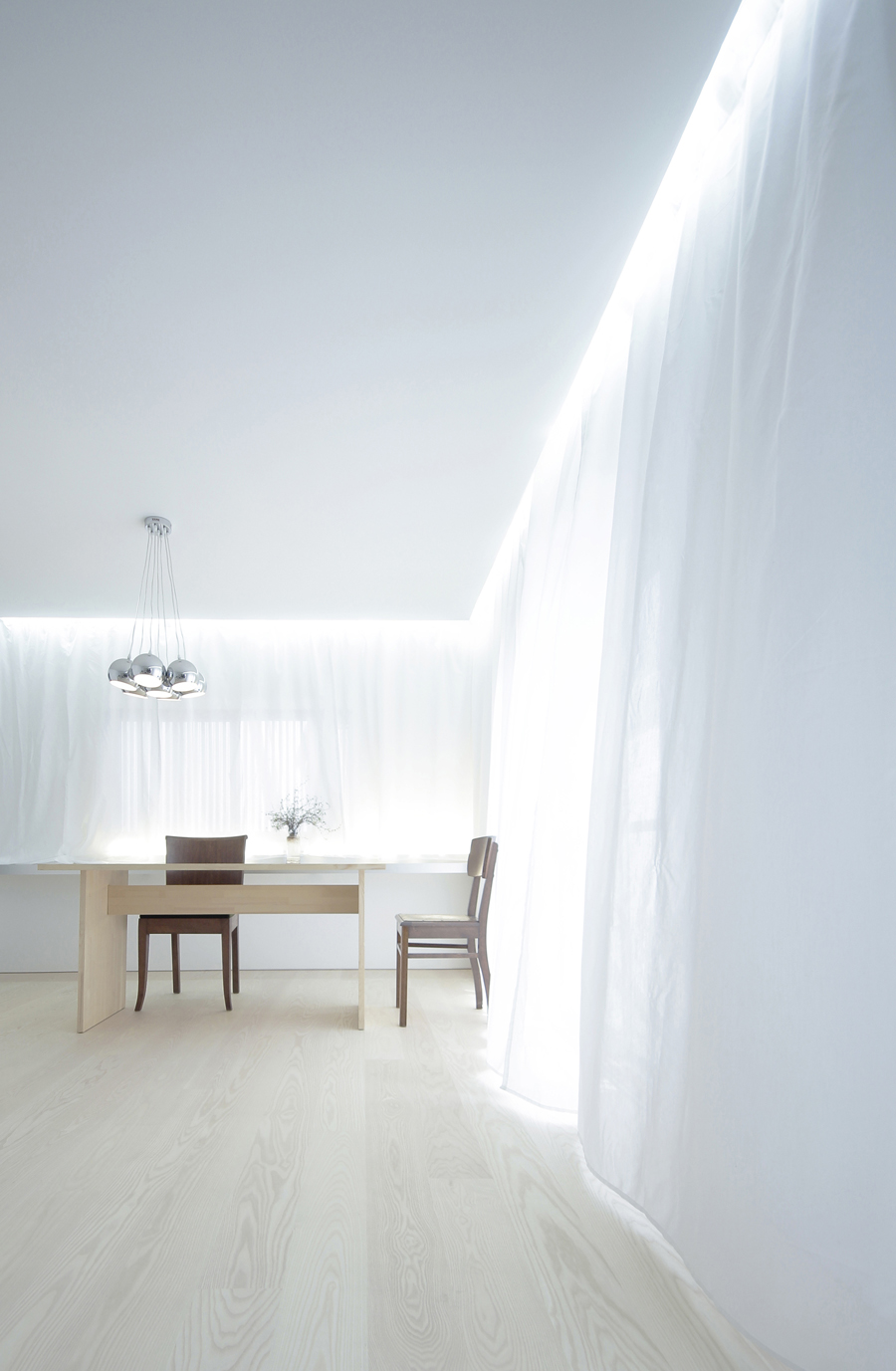
Through the day and night, from the perimeter of it, the light and the air are passed through, and wind and various sounds flows in the daily life.It gives the movement and various expressions of life into the white space with the inorganic atmosphere, and makes the space rich.
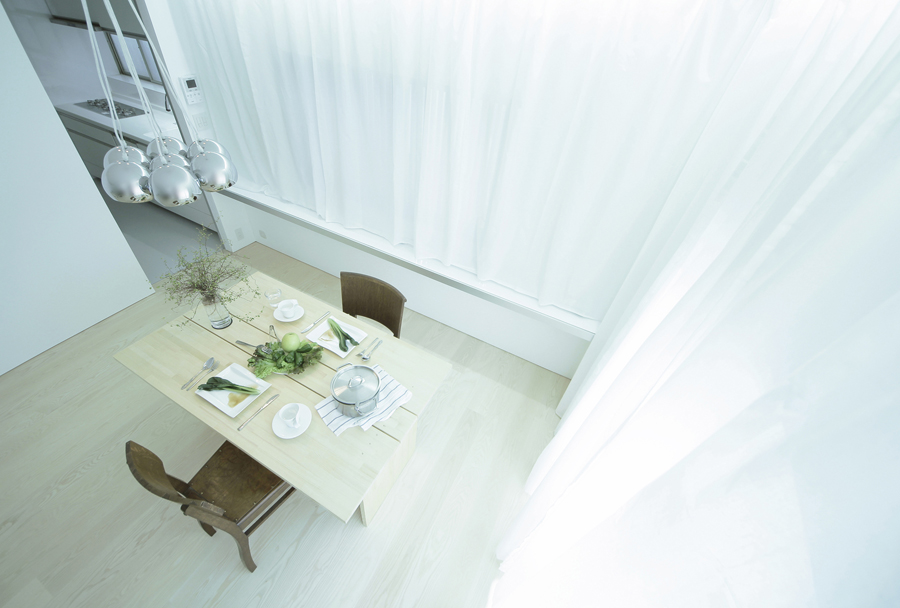
Delicate details with simplicity are highlighting the impression of material which chosen carefully and the expression of light.Modest space with the blank space - I wanted to give the variability and tolerance in space. I think, residents are able to have diverse selectivity by providing a primitive space for living.



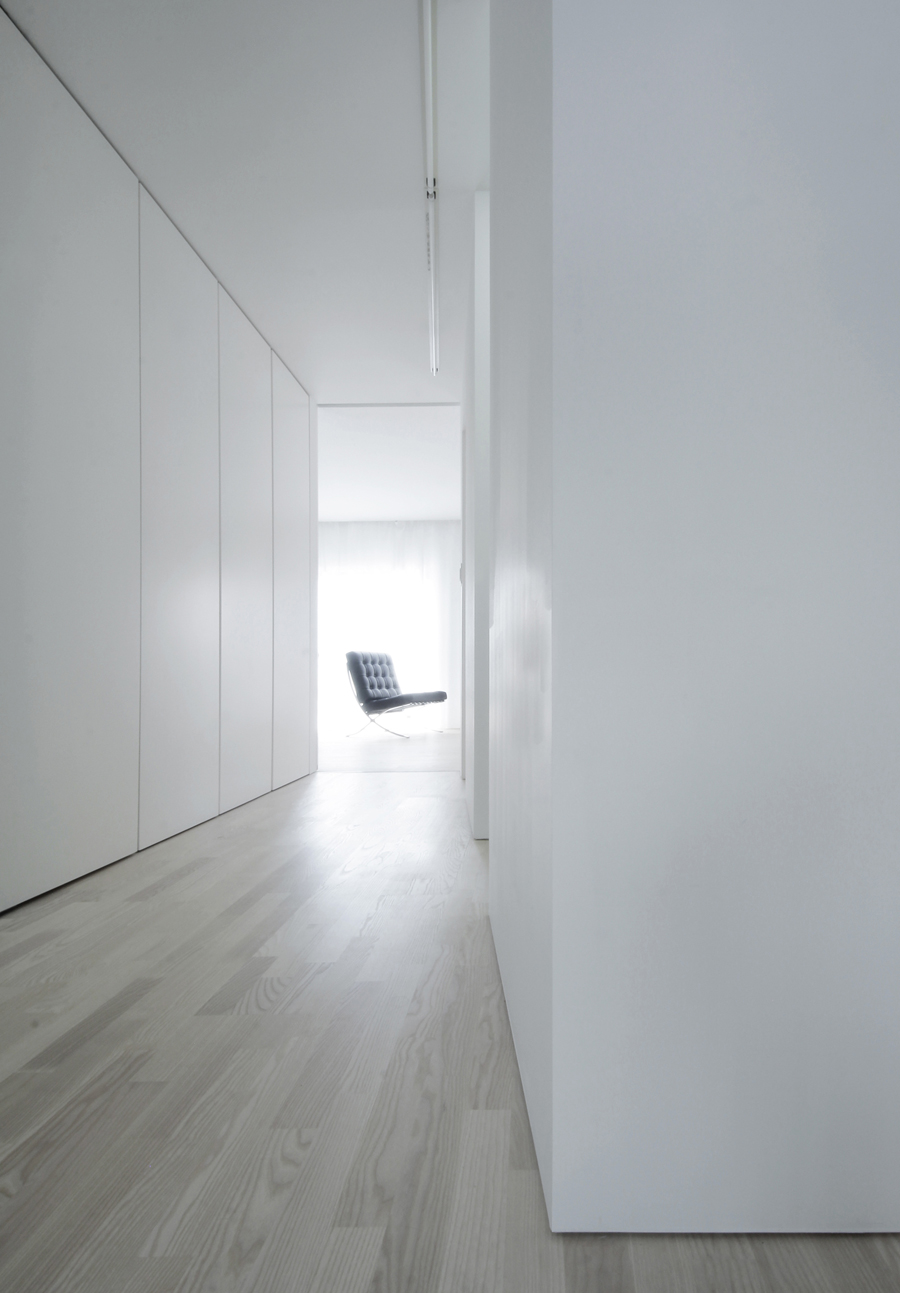
Photography © Jun Murata / JAM.
Project Facts
Location:Kashiwara-shi, Osaka
Function:Residence, Atelier, Office
Completion:Mar. 2014
Architect:Jun Murata / JAM.
Structure:Timber Frame / Renovation
Site Area:88.56 sqm
Floor Area:116.50 sqm
Model:Nini, Huanhuan
Open House:1pm - 5pm / May. 11, 2014
> via junmurata.com
